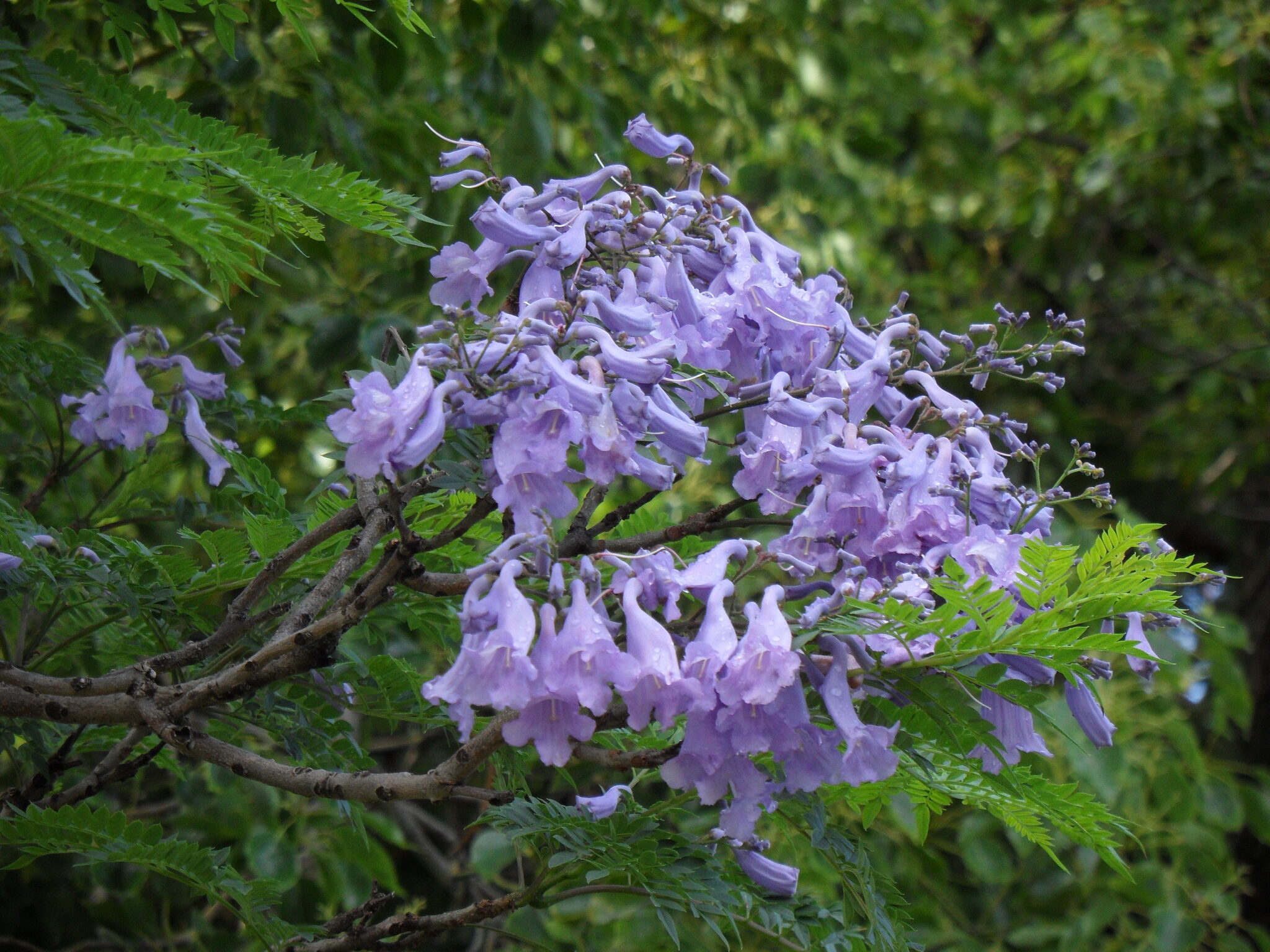
Tree to 15 m or so tall, deciduous. Leaves ferny, 30-40 cm long, swollen at the stalk base, appearing with or just after the flowers. Leaflets 30-50 on each branch of the leaf, lanceolate to elliptic,1-1.5 cm long, 3-4 mm wide, tip shortly pointed, changing to yellow at the end of winter before falling, the new leaves appearing in Nov-Dec. Flowers in terminal clusters, blue-violet, tube 4-5 cm long; late spring to early summer. Fruit a flat, more or less round follicle 5-6 cm wide. [J. acutifolia Humb. & Bonpl., J. ovalifolia R. Br.]
Argentina, Brazil
Jacarandas are warm-climate trees. In Australia they are at their southernmost limit in Melbourne, where they are frost-tender. In the cool climate of Victoria trees bear only a few seed pods, while in warmer NW regions of the state more fruit is produced. Jacarandas are a feature of coastal New South Wales and Queensland cities and towns, notably Brisbane. In Grafton, New South Wales, they are a special feature at Floral Festival time. In New Zealand they are grown on the northern half of the N Island.
J. mimosifolia 'White Christmas' has white flowers.
VIC: Burnley (University of Melbourne Burnley Campus); Mildura (Deakin Ave and Memorial Gardens); Melbourne (Royal Botanic Gardens Victoria (Melbourne Gardens), Princes Lawn); Albert Park (St Vincent Gardens). NSW: Grafton (many streets); Wellington (Park).
Source: (2002). Bignoniaceae. In: . Horticultural Flora of South-eastern Australia. Volume 4. Flowering plants. Dicotyledons. Part 3. The identification of garden and cultivated plants. University of New South Wales Press.
